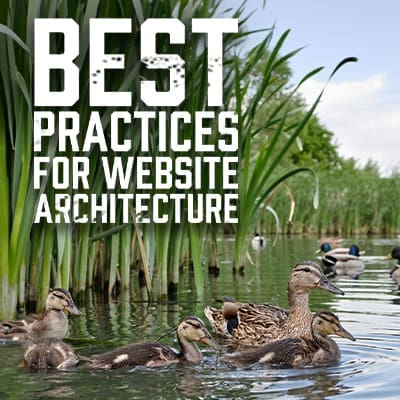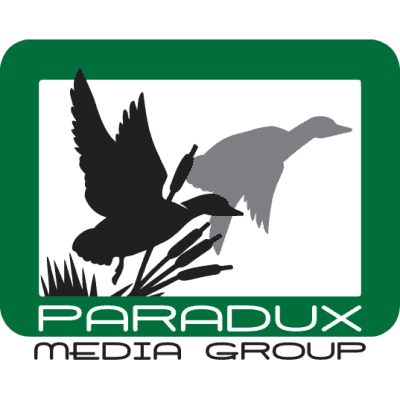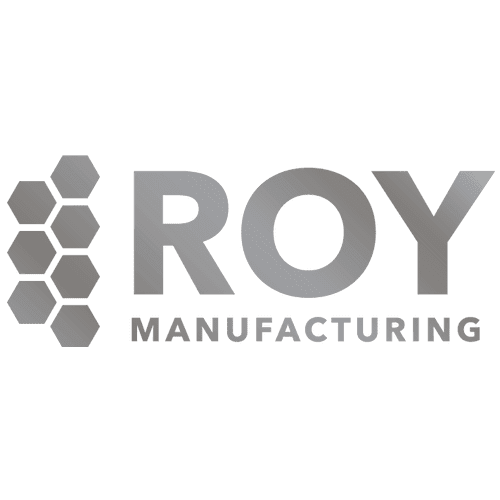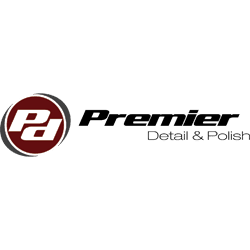Today, it’s easy to build a website. You can use one of dozens of do-it-yourself tools to use a pre-designed foundation to create a site in an afternoon. Because of that, many small business owners figure they can save money by creating and managing their websites on their own or asking for help from a tech-savvy relative or friend. This is usually one of the biggest mistakes a business owner makes. Your website is your online business, and whether it successfully drives traffic to your physical site or converts viewers to online purchasers of your product relies upon its ability to be discovered by internet searches. Just as a well-designed store–both physical location and internal layout–leads to more foot traffic and sales, the website architecture of your business is detrimental to SEO and success.
 Website architecture refers to the layout and organization of a website’s content, pages, and navigation. A well-planned architecture not only helps users find information easily but also facilitates search engine bots to crawl and understand the site better. An overwhelming majority of people feel that a website’s architecture–how easy it is to navigate and find information easily–is the most important quality of a good website.
Website architecture refers to the layout and organization of a website’s content, pages, and navigation. A well-planned architecture not only helps users find information easily but also facilitates search engine bots to crawl and understand the site better. An overwhelming majority of people feel that a website’s architecture–how easy it is to navigate and find information easily–is the most important quality of a good website.
Most Important Best Practices for Website Architecture:
Logical Structure
A logical website structure involves organizing content into categories and subcategories. At Paradux Media, we start by understanding your business, its operations, and its goals. Our philosophy is to keep things simple. In most cases, we use fairly standard structure maps for web design based on the behaviors and expectations of today’s internet users. For example, most users expect to find a home page with the most important information about the company’s products and services; a page dedicated to the company’s history, location, and hours; a way to contact the company; a link to guides or further information; and a place to shop online. From there, we ascertain if this is sufficient or if more complexity is needed. Our goal, however, is functionality.
It’s also important to eliminate any orphan pages. Orphan pages are not linked to other pages. Imagine an employee in the organization chart of a company with no boss and no direct reports. These pages exist, yet it is impossible to get to them without a direct link from another source (like an email) or by knowing the full URL address. Web browsers also won’t find them as they flow from page to page on your website, so they will not rank for SEO.
Keyword Mapping
Before designing a website, it’s important to consider your keyword strategy. What words or terms are most relevant to your business for internet searches? In other words, when someone performs an internet search for these words, you want your business to be at the top of the results list.
Words that are most important to your business should be optimized in pages that rank higher in your website hierarchy. For example, one of our most important keyword phrases is “advertising agency.” We’ve designed our homepage to optimize those words so that when people are looking for an advertising agency, our page will come up higher in the results.
URL Structure
The URL is the address for each page of your website. It is one of the first pieces of code Google sees about the page to help it understand what content it will find on the page. Many do-it-yourself website applications don’t allow the user to choose or change the URL structure or page addresses.
Best practices include implementing a clean and descriptive URL structure. Often, it’s helpful to include keywords in URLs to signal relevance to search engines. Avoid long URLs with unnecessary parameters or session IDs. For example, `example.com/category/subcategory/product-name` is preferred over `example.com/index.php?id=123`. Unfortunately, with out-of-the-box websites, you may not be able to control that.
Internal Linking
Internal links are hyperlinks in one article that take the viewer to another page with more detailed information. They are extremely helpful for people because they make it easy to learn more in-depth information about a topic. It’s helpful to use descriptive anchor text that includes relevant keywords. Link related pages together to guide users and search engines through your content hierarchy.
One way to think about and organize links is by using a pillar and cluster format. A pillar represents a more generalized keyword, such as “advertising agency.” Those pillar keywords should be on pages higher on the hierarchy. Clusters include long-tailed keywords, such as “advertising agency in Eagle Point.” Long-tailed keywords might not be searched as often, but they are more specific and easier to rank higher for. A page discussing the advertising services in Eagle Point should link back to the main advertising agency page.
Flat versus Deep Structure
If you liken your website pages to that of an organizational chart, a flat structure has many leaders at the top with few levels of management below them, while a deep structure has only a few key leaders with many layers of staff, supervisors, and managerial levels. For most websites, a flat structure works best. Here’s why:
- A flat website architecture promotes better crawlability and indexing by search engines. In a flat architecture, all important pages are located close to the homepage and can be reached with fewer clicks. This means search engine bots can easily discover and access deeper pages without having to navigate through multiple levels of hierarchy. As a result, more of your website’s content gets indexed efficiently, improving its overall visibility in search results.
- A flat architecture enhances user experience and site navigation. With fewer levels of depth, users can quickly find the information they need without feeling lost or overwhelmed. This simplicity and clarity in navigation reduce bounce rates and increase the time users spend on your site, which are positive signals for SEO rankings.
- A flat website architectures tend to have cleaner URL structures. URLs that are concise, descriptive, and keyword-rich (but not stuffed) are more user-friendly and easier for search engines to interpret. This contributes to higher click-through rates in search engine results pages (SERPs) and reinforces the relevance of your content to search queries.
Optimize your online presence with Web Design and SEO Consulting Services from Paradux Media.
Website architecture is a foundational element of web design and SEO optimization. By implementing best practices in website structure, design, and SEO, Paradux Media can enhance your website’s visibility and ranking in search engine results. We focus on creating logical and user-friendly website architectures, optimizing for crawling and indexing, and continuously monitoring and improving performance to achieve sustainable SEO success. Contact us today to learn more about joining our flock. We’ll have you soaring towards success in no time.
- Published: April 29, 2024
- Author: Angela Peacor
- Category:
- Tags:
- Comments:
Quacktastic Reviews:
Excellent team to work with! Mike and Tisha are fantastic at coming up with new ideas while staying true to my companies vision, values, and…

Operating a restaurant and bar is hard enough. It demands wearing many hats. Promotions and marketing is not one of them any longer since we…











Can not recommend this team enough. What started as a one-time website re-design has evolved into Paradux handling the vast majority of our marketing. Business…











We would not be able to run as smoothing, quickly, or efficiently if it was not for Paradux Media Group. Tisha and team is hands…











Recently, I had the opportunity to work with Paradux Media on a website build, and I just couldn’t have been happier with the process and…











Mike and his team are well known within the region and marketing community as an insightful industry leader. If you are looking for a Marketing…











Paradux Media is a very professional group, and they know what they’re doing. Whether they are placing buys for clients, or producing high-quality TV spots,…











Paradux helped build my business in all capacities. Without them, I would never have had the resources and ability to get so much accomplished –…











Mike, Tisha, and the team can build you anything you want for your company or small business. Very knowledgeable and easy to work with. They…











As a long-time client of Paradux, I can confidently say that their creative team is one of the best in the business. They consistently produce…





















